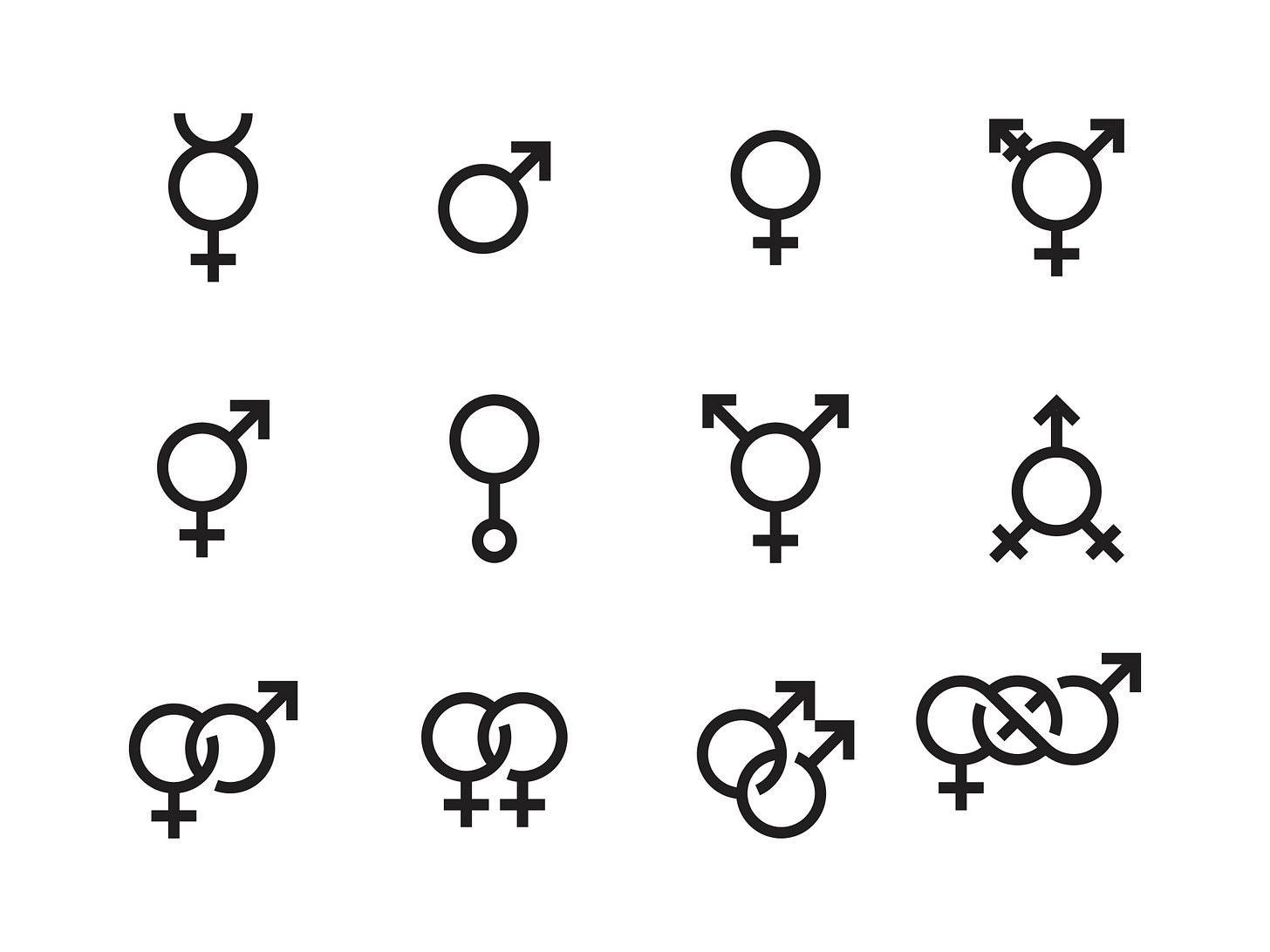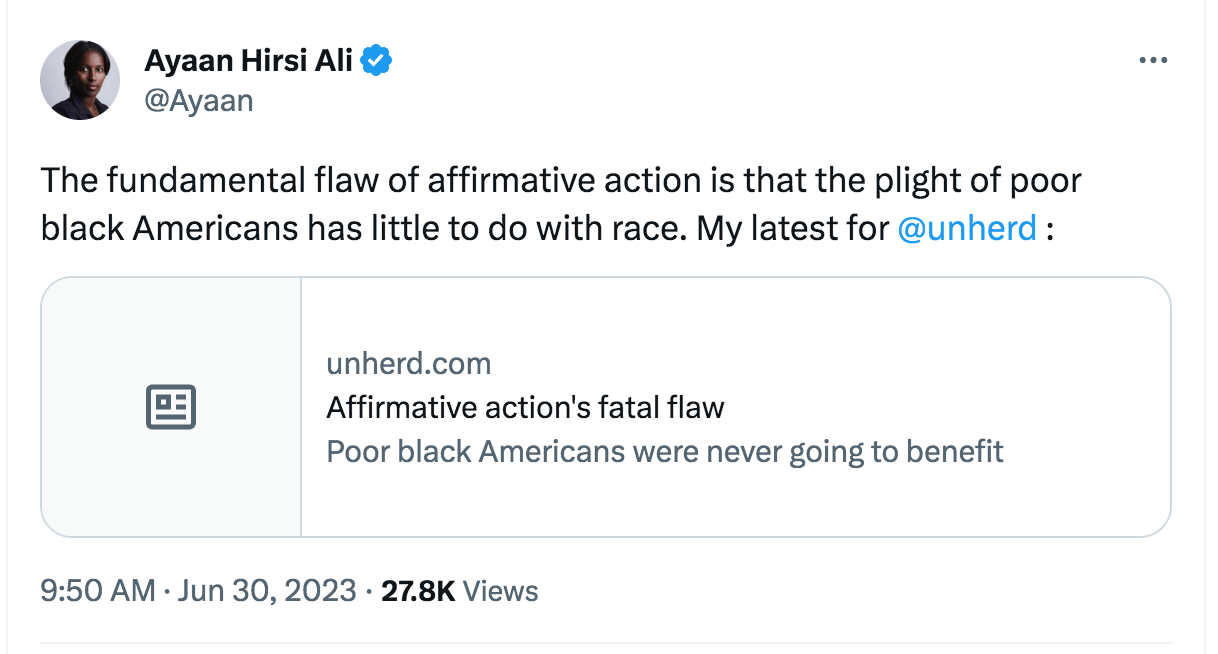E-Pluribus | July 6, 2023
Three kinds of liberalism? Inconceivable!; surviving the trans revolution; and the Pursuit of what is Interesting.
A round-up of the latest and best writing and musings on the rise of illiberalism in the public discourse:
Jonah Goldberg: You Keep Using That Word
In his latest G-File for The Dispatch, Jonah Goldberg suggests that people today throw around “liberal” as carelessly as Vizzini did “inconceivable” in The Princess Bride. Though Goldberg’s discussion is more wide-ranging, below is an excerpt of his piece details three kinds of liberalism to help shed light on a word with more nuance that many allow for.
I disagree with Alan Wolfe on quite a few things, but I think it might be useful to quickly explore his three kinds of liberalism: substantive, procedural, and temperamental. Substantive liberalism is closest to what most people mean by libertarianism: “As many people as possible should have as much say as is feasible over the direction their lives will take.” Equality is a major component of substantive liberalism. All people have innate dignity and autonomy.
Procedural liberalism, as it sounds, is the system we put in place to realize our substantive commitments. Constitutionalism, the rule of law, the idea that we all have the same civil rights: These are the practical safeguards of equality and liberty. But procedural liberalism is not “morally neutral.” It is imbued with the spirit of fairness and justice, rightly understood. For instance, the right to a fair trial is a profoundly moral concept, hard-learned over centuries of injustice. Get wrongly accused of murder or have the state seize your home and get back to me if you still think a right to a fair trial or getting your day in court is morally neutral.
[ . . . ]
And then there’s the liberal temperament. Much like the conservative temperament, this can be found across the ideological spectrum. Big-heartedness, openness to technological change, tolerance for different opinions and creeds are primarily expressions of psychology and character. Some of the most ideologically conservative people I know have liberal temperaments and some of the most leftwing people in the world have very conservative temperaments. Indeed, some of the worst aspects of what we call contemporary liberalism (i.e. progressivism) are its aversion to change, its pinched and dour defense of the bureaucratic status quo, and its closed-minded attitude toward innovation.
[ . . . ]
One useful way to think about it: The opposite of liberalism isn’t conservatism. Historically, much (though not all) of what we call American political conservatism is an effort to conserve American liberalism. If you believe the government should be bound by the rules laid out in the Constitution (including the amendments!), then you are arguing for conserving (or preserving) American liberalism. If you believe in the right of consenting adults to commit capitalist acts—or to refuse to for reasons of conscience—you are for conserving liberalism. In short, the opposite of political and philosophical liberalism isn’t conservatism—it is illiberalism. And neither the left nor the right have a monopoly on illiberalism.
Read it all.
Heather Mac Donald: A Battle for Cultural Survival
The speed with which the transgender revolution hijacked the public discourse is stunning. At City Journal, Heather Mac Donald explores the fallacies fueling revolution, how the media encourage it, and what those concerned about its impact on our culture can and should do to fight back.
The trans revolution, the most startling and unforeseeable in human history, is all the more remarkable for its scientific illiteracy and philosophical incoherence. The New York Times may cluck in disbelief that right-wing culture warriors seek to define “sex as binary” depending on whether a “person produces eggs or sperm.” But such a binary division between the sexes is written into every cell of a person’s body, absent a terrible genetic miscarriage. Changing someone’s sex would require switching the male XY chromosomes with the female XX chromosomes in trillions of cells, and vice versa.
[ . . . ]
The rare genetic misfirings that result in hermaphroditism do not undermine the mutually exclusive and binary nature of sexual identity, just as the fact that a child may be born blind does not undermine the fact that vision is a human attribute.
The sexual binary shows up in the anatomy of fetal brains before any possible influence of societal “gender stereotypes” (though the physical impossibility of such influence does not mean that gender theorists might not posit it). Female fetal brains have more neurological connections than male fetal brains. Cognitive differences between males and females’ surface within the first year after birth and only accelerate thereafter, especially with regards to visuospatial and verbal skills. So deciding to become the opposite sex would entail a brain transplant as well as genetic engineering.
Perhaps it is asking too much of gender theorists to understand biology before they cast aside centuries of research into genetics and physiology. But their philosophical competence is equally weak. Gender theory is internally contradictory and politically regressive, despite the revolutionary posturing of its proponents.
Read it all here.
Ed Smith: The Instagram Panopticon
The look-at-me nature of social media has been apparent since its inception. While most social media platforms cater to our exhibitionist proclivities, Ed Smith at Quillette examines how Instagram (which just launched Threads, its new Twitter competitor, this week) in particular takes advantage of humanity’s weakness for, as he terms it, the Pursuit of the Interesting.
In a saturated digital arena and offline marketplace, the aim of all content and media is the Pursuit of what is Interesting. The natural state of humanity in civilization involves an absence of danger. This produces boredom, which our ancient brains seek to relieve with entertainment. The upshot is a digital arena in which attention is the common currency. In the competition for eyeballs, content must therefore be sufficiently interesting to seize and hold the attention of as many people as possible. Content—be it truth or lies, fiction or fact—has to intrigue the viewer and satisfy their curiosity, providing value to all involved.
[ . . . ]
Like Pavlov’s dog, the exhibitionist is trained to associate the Interesting with attention. This may become compulsive, as it smudges the line between the human desire for social approval and the desire to entertain. The excitement of the Interesting and its rewards—not to mention the hole left by their absence—make exhibitionists aware of the need to surprise, shock, or impress the voyeurs. This kind of behaviour may be met with authentic spite (for example, the makeup-free selfies posted by beauty influencers), but it generates attention and engagement nonetheless.
The Pursuit of the Interesting is why Instagram appears to be a curated highlight reel of someone’s life. Posters show only what they want their audience to see. This carefully filtered life distorts reality for the voyeurs, whose perception of the posts provides a further distortion. Furthermore, what is Interesting is also what is unusual—a common experience is unlikely to be Interesting unless there is something extraordinary about it. And of course, what is being photographed and shared may also be distorted, to make it seem more fun, more exciting, and more unusual than it actually is.
[ . . . ]
The Pursuit of the Interesting shapes Instagram’s effect on the identity of the exhibitionist. The identity they display on Instagram is not their identity offline because their online identity must be perceived through the lens of the Interesting. To hold the attention of their audience, posters must become characters through the images they share. Characters are actors of the Interesting because they are dramatically unlike the normal, everyday interactions the viewers generally have offline. Communicating identity through characters and stereotypes is so common on Instagram because it is so rare in the offline world, thus posters can use what’s rare offline to attract attention online.
Read the whole thing.
Around Twitter
Ayaan Hirsi Ali weighs in on affirmative action:
Via Jonathan Turley, “the government only censors bad stuff” isn’t the defense you think it is:
And finally, filmmaker Eli Steele on “color blindness”:











On “color blindness”: I recently saw something suggesting the phrase “color indifference” instead. Which acknowledges that yes of course you do see color, you just don’t base your decisions on it.